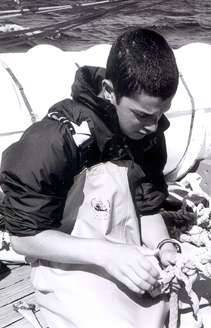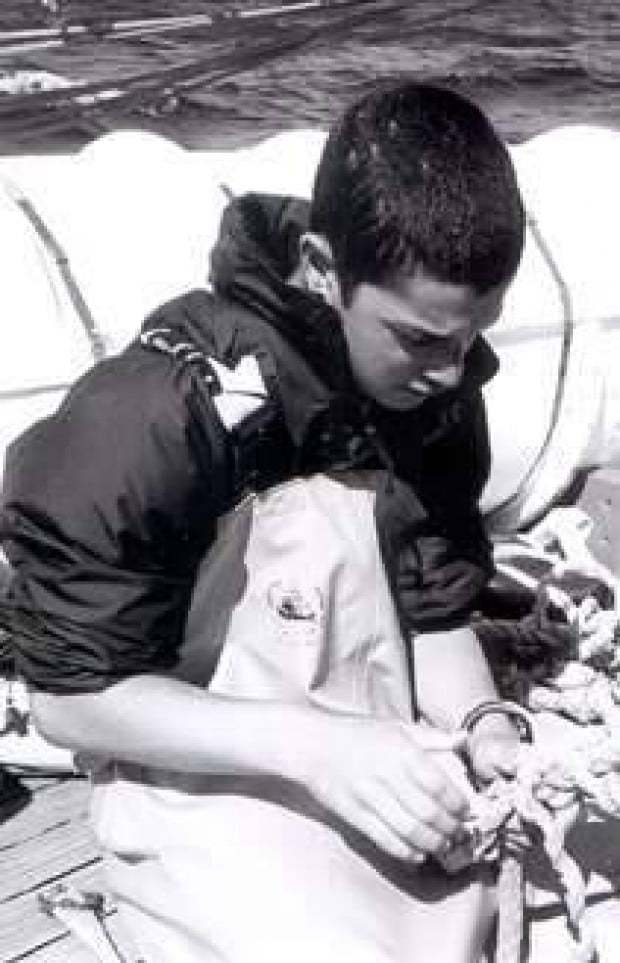School bells toll on over-enrolled, but physically upgraded schools
As the Santa Monica-Malibu Unified School District gets ready for the new school year beginning Sept. 5, lack of space due to over-enrollment seems to be a predominant concern in Malibu elementary schools, while Malibu High’s enrollment remains stable for the time being.
“It shows people like the schools,” said John Deasy, the new SMMUSD superintendent, who is working on solutions to accommodate all students. “It’s a tough situation from a positive point of view. We have a contingency plan, but we will make sure we have an actual head count when students arrive first. Should students come in and a school actually be over-enrolled, than we would have to make an extra classroom.”
On that up note, many school constructions projects that were underway throughout last year are now completed, so students will benefit from new playing fields, libraries and updated academic programs.
This year, Webster Elementary School expects an estimated 450 students, with 80 incoming kindergartners. But the school barely has space to accommodate all the students and they are over-enrolled in the 1st and 2nd grades.
Webster now has a new library and a computer lab, said Principal Phil Cott. A second playing field will open in a month or two and will be available for community use during off hours.
Academically, Webster will use new math and science programs that include hands-on activities.
“This will be the first time in many years that all the schools are using the same math program,” said Cott. “We believe that it will help all students district wide meet the state standards because it was written specifically after the new standards were set.”
Webster will also have three new teachers, replacing three longtime teachers who retired at the end of the last school year.
Point Dume Marine Science Elementary School is also full.
“We’re really trying to figure out strategies of who has the room,” said Cynthia Gray, Point Dume principal, about the overflow. “It has not been so in the past. Point Dume opened six years ago to create that outlet and we’re cutting back. Now I have room only in second grade.”
Point Dume has about 350 students enrolled, with 47 incoming kindergartners. The school is unique because many of the teaching positions are filled by teachers who job-share, which means they share one contract and each one usually works 50 percent of the time.
Juan Cabrillo Elementary is also overenrolled in four grade levels with waiting lists. As for improvements, Cabrillo is getting a face-lift with exterior paint and an upgrade to one wing.
An informal introductory meeting between students, teachers and parents will take place at a barbecue at Juan Cabrillo on Tuesday, 4 p.m. – 6 p.m.
Malibu High School expects 1,200 students this year, with 50 or 60 incoming 6th-graders.
“But we never quite know how many we are going to have until they actually sit in their seats,” said Principal Mike Matthews.
However, unlike the elementary schools, Malibu High is not running out of space because enrollment remains stable thus far.
“One of the goals we always have is to make sure we know our students well,” said Matthews.
This year, the school hired an additional English teacher and one middle school counselor. “We now have a middle school assistant principal and the Boys and Girls Club to meet the needs of middle school students,” said Matthews.
In an effort to offer continuity for older students, high school students will now have the same homeroom teacher for the entire four years of high school, enabling students and teachers to know each other well.
Malibu High will feature a new track and field with a new all-weather track, and Matthews hopes the 12-classroom building, now under construction, will be finished this year.
The school also hired an athletic director who will help expand the program, said Matthews.
Malibu High will become the Malibu headquarters for the district superintendent. In an effort to be directly involved with Malibu schools and the community, Deasy opened an office at the school, where he plans to be available Thursdays or Fridays, depending on board meeting dates.
No chills at Chili Cook-Off – hot recipes sure to warm up crowds
A lonely tractor cleared the weeds and debris last week in the Civic Center area as signs were posted and fences erected in preparation for the 20th Annual Kiwanis Chili Cook-Off, a Labor Day weekend tradition that culminates the summer season for Malibu.
Festivities, including multiple bands, food, drinks, raffling of prizes, carnival rides and the infamous chili cooking contests, are planned for this weekend, beginning with the carnival, Friday at 6 p.m.
This Malibu mainstay is entirely organized by 15 members of the Malibu Kiwanis Club. “We each have three different jobs,” said Nidra Winger, Kiwanis board of directors member, of the club’s preparation for the event.
“I have been at the Chili Cook-Off 20 years and never tasted the chili because I am so busy,” she said.
While chili chefs of all kinds battle over steaming stoves in this internationally renowned event for chili cooks, and Malibuites put their taste buds to the test, a 2001 Porsche Boxster will be displayed, enticing this year’s raffle contestants.
Kathleen Quinlan, star of TV’s “Family Law,” will pick the winning ticket for the Porsche.
The Malibu Kiwanis will buy or bought the car from Ogner Motors and have to sell at least 500 tickets ahead of time just to get the event underway.
But raffle tickets, at $100 each, can still be purchased at the front gates until 3 p.m., Sunday. It is not unusual for people to buy last minute tickets, said Winger.
The Kiwanis Club is a service club comprised of business and community members that offer up their time and resources to raise money. The funds are given back to the community to other nonprofit organizations, explained Winger. “We focus on children’s organizations,” she said.
Baseball programs, the Boys and Girls Club, schools, the library and the Garden Club are among the beneficiaries of this philanthropic organization.
Winger, who was the first female president at the Malibu club in 1993, said, “We will have a chili contest on both days, Saturday and Sunday.”
This year’s event will offer entertainment for the young, old and all ages in between. A virtual spectrum of music styles, including pop dance, new country, hip-hop, swing, blues, reggae and ethnic rock, will be featured.
For chili cooks, prizes will be given both Saturday and Sunday.
“Winners can go on to the world champion chili cooking contests,” said Winger.
Pepperdine’s small size, nurturing environment attracts students
University has capped enrollment, keeping class levels low. The average class size is 17, and the faculty to student ratio is 1 to 13.On Monday, about 2,700 new and returning students attended classes at Pepperdine University, with 683 freshmen and transfers attending Seaver College–the main component of Pepperdine’s Malibu campus.
Pepperdine is composed of five schools and colleges, but not all are in Malibu.
Seaver College, the School of Law and the School of Public Policy are located on the Malibu campus while the Graziadio School of Business and Management and the Graduate School of Education and Psychology are headquartered at Pepperdine’s West Los Angeles facility. However, students at the West L.A. facilities can reside on the Malibu campus if they wish.
Presently, the university continues to expand and a new Drescher Graduate Campus is under construction at the Malibu site.
“The majority of students come because the school offers a smaller college and university environment,” said Mike Truschke, director of admissions for Seaver College.
“The academic and the personal touch that you get here certainly is important,” he explained.
Amber McKinney, a senior who will major in biology, lives on the Malibu campus and said she enjoys the fellowship and community feeling Pepperdine has to offer.
“I chose Pepperdine because it’s a close-knit community,” she explained. “There is always somebody who truly cares without being smothering.”
The university has capped enrollment to keep Seaver College at a relatively small size, said Pepperdine University President Andrew Benton.
The average class size is 17, and the faculty to student ratio is 1 to 13.
Two-thirds of the students will live on campus, said Truschke. These students are usually between 18 and 22 years old and approximately 50 percent come from California, 40 percent from other states and 10 percent travel from other countries.
“The most popular majors are business administration, biology and sports medicine,” said Truschke. “Students are choosing us for our academics and our international programs.”
Aside from staying at the Malibu campus, more than 50 percent of the students will study abroad for a semester or two, given that Pepperdine has campuses in five other countries as well.
Incoming students average a 3.8 GPA and score 1,270 on the SATs but “we don’t have a minimum criteria,” said Truschke, regarding the scores of incoming students.
The cost to attend the university this year, including tuition, room and board, and student fees, totals $32,830, but does not cover individual spending money.
Eighty percent of the students are on some form of scholarship, said Truschke. These scholarships come in various forms from either university-sponsored scholarships that offer athletic, academic and special achievement scholarships, or state and federally funded sources.
The scholarships are awarded on a need and merit basis. The academic scholarships are typically awarded to the top 1 or 2 percent of students for each incoming classes.
The school also has a small number of part-time students. Anyone who take less than 12 units, pay $785 per unit.
On Friday the university completed a 33,000 square foot science facility that received the stamp of approval from the county and is now open.
“My greatest interest is in ensuring that students have the best possible experience in the classroom and extra-curricular activities,” said Benton, who is a hands-on president.
This term, aside from his presidential responsibility, Benton teaches a course entitled “The Legal Environment of Business” to 22 students.
Recipes from across the pond
Thanks for all the requests for French recipes mentioned in this column. I was able to wheedle only a few out my French friends and none directly from the restaurants. Although Mimi promised to give me her Trouffade secrets, I never got them. So after I got home, I tried out a few that were given to me orally in French. How scary is that? They all seemed to have lost a little something in the translation and some of the French ingredients are virtually impossible to find here. Fromage blanc is sold in most French markets in the dairy case near the yogurt, which it slightly resembles. Actually, you can substitute ricotta in most recipes.
Anyway, I’m happy to share these, along with my comments on the results from the test-kitchen at Chez Pam.
Trouffade
1 large finely minced or sliced onion
1-1/2 lbs. thinly sliced potatoes
1-1/4 cups fromage blanc (ricotta, shredded cantal, whatever)
1 cup crumbled bacon (real or faux)
Lightly saut onion in a little olive oil. Layer all ingredients in an oiled ovenproof dish. Brush potatoes with oil or melted butter, sprinkle with salt and pepper. (Add dill and chives if you like.) Finish with cheese layer.
Bake 65 minutes at 375 degrees. Serve with a green salad, sliced ham (for carnivores) and crusty French bread.
You can make this dish out of leftover baked potatoes, cottage fries or even coarsely mashed potatoes. Layer with sauted onion, crumbled bacon and cheese and cut the baking time to 20 minutes, or maybe 30 if the potatoes have been refrigerated.
Trouffade resembles a dish called Rapee Morvandelle, only it is much easier to make and, of course, eggless. Julia Child’s recipe in “Mastering the Art of French Cooking” calls for shredding the peeled raw potatoes. This is a real test of one’s devotion to traditional food preparation. Potatoes do not take kindly to this treatment and show their displeasure by immediately turning a vile reddish brown and weeping profusely, necessitating much squeezing and blotting in paper towels. Yuck. The onions and cubed ham must be sauted in oil and butter; then the eggs are beaten with whipping cream, garlic, herbs and grated Swiss cheese. The whole mess, er melange, is then poured into a baking dish lined with foaming butter, dotted on top with more butter and baked for 30 or 40 minutes. Everyone loves it, but until now, I’ve made this dish only once a year (using the leftover Easter ham). From now on it will be Trouffade–much easier and every bit as good.
Picnic Potato Salad
10 or 12 small potatoes (Yukon Gold, white or red)
1 cup onion finely diced
2 cups strong beef broth
1 bunch fresh chopped parsley
For the dressing, mayonnaise thinned to taste with milk, plain yogurt, or a mild vinaigrette
Boil the potatoes about 20 minutes (do not overcook). Drain and cool just to handle comfortably. Slip off the skins, cube and place in a glass or ceramic bowl, cover with broth and soak at least two hours at room temperature or overnight in the fridge. Drain and combine with onion, parsley (and chives or other herbs to taste). Gradually add dressing and toss lightly.
Yukon Gold potatoes are great for this because they keep their firm texture even if inadvertently overcooked. In trying to duplicate the taste and consistency of the salad I had in France, I found the dressing most difficult. The gentleman who made it said he used just a little mayonnaise, but I tried several types and they were all too thick and strong in flavor. The secret is to keep the flavor of the dressing from overpowering the flavor of the broth, so choose the mildest mayo you can find and work from there. If you’re making this for vegans, use vegetable broth, and if they are averse to mayonnaise, try a very mild, thin yogurt dressing. Avoid the impulse to salt. Opt instead for a little pepper, if you must. But keep it simple, at least on the first attempt.
Bon chance!
Malibu student gets a real lesson at sea
Griffin Brown, a 14-year-old Malibu High School student, didn’t spend this summer at the beach the way most teenagers did. Instead, he embarked on an adventure that he will long remember.
Griffin set sail in Boston aboard the Spirit of Massachusetts, a 125-foot two-masted schooner built in 1984 for the Ocean Classroom. The ship is a replica of the high-speed Fredonia, a renowned 19th century Gloucester fishing schooner.
Bound for the Canadian Maritime Provinces via New England, Griffin was a participant of the Ocean Classroom’s Summer Term 2001 at Sea, the nation’s only fully accredited high school at sea program.
Recognizing his mother, Cathy Caballero, for discovering this challenging and educational sailing experience in Atlantic Monthly Magazine, Griffin wasn’t sure what he was in for when he decided to participate.
“The voyage turned out to be harder than I expected,” confesses the young teenager, who was gone for six weeks, “because it was a lot of work. There was so much to learn about sailing and I was responsible to keep up with my academic work, too.”
The Ocean Classroom is a complete semester at sea for high school students and post-graduates, fully accredited by Proctor Academy of Andover New Hampshire and offered in cooperation with South Street Seaport Museum and the Allied Whale Research Center. Grades, credits and transcripts are sent to the student’s high school. It has received national awards for excellence in education.
No stranger to the sea, Griffin grew up in Malibu, surfing since age 11, and has always had an appreciation for the ocean.
Right from the start, the 16 students he set sail with became a team. The 10 girls and six boys, ages 14-19, gathered in small groups to study marine science, maritime history, navigation, whaling history and research, as well as the fisheries of the regions, while calling at 10 ports. Their first landing was at St. John’s, Newfoundland, with more stops at fisheries in the Gulf of Maine, Bay of Fundy, St. Pierre and Lunenburg. Essential to learning was the history of the many ports visited.
A typical day on his seafaring journey was an early rise for six hours of morning watch with the professional crew, handling sails, hauling lines, navigating and steering within the traditions of the tall ships.
Next came three hours of demanding class study, collecting information, preparation for marine science projects, literature lessons and discussions, ship responsibilities, homework assignments, socializing and the long-awaited time to sleep.
“The ocean was the medium for learning, adventure and travel for each student’s personal discovery,” relates faculty member Devri Byrom, who specializes in marine science education and has been a major contributor to the courses of the Ocean Classroom and a leader in underwater research expeditions.
Detailing that students had a comprehensive study load at sea that included sea-related literature, with reading and discussion of Kipling’s “Captain Courageous” and Farley Mowat’s “The Boat That Wouldn’t Float,” she mentioned that sea poetry and sea shanties were learned and sung, too.
“Although Griffin was one of the youngest students, he was an active participant,” said Byron. “He and his partner, Victoria Ford from Tennessee, created an outstanding mixed-media replica of a traditional whaling vessel from gathered pieces of bark, collected on beaches, intermingled with toothpicks, then glued and varnished.”
She added, “Griffin was an able-bodied deck hand, who found personal satisfaction with navigation skills and seamanship.”
Although he thought the voyage quite long, “The whole trip will affect my life,” stated Griffin. “It made me more interested in sailing and more knowledgeable about the sea. I will always remember the excitement I felt when I climbed to the top of the mast to tend the sails. I also learned time management, as a way to balance learning, sailing, homework and sleep.”
His fascination with whales emerged into a project relating to issues pertaining to the whaling industry, specifically the humpback whales; conducting interviews in Newfoundland and Nova Scotia with experts in the field. Gloucester, the small fishing port where so many fishermen lost their lives, made a lasting impression on him. As his final project, Griffin developed a term paper on the “Evolution of the Dread Naught Battleship.”
The memory of these authentic sea experiences and the lessons relating to the ocean will remain with this Malibu youth for the rest of his life.
PCH becoming highway of death
Recent accidents spur residents to ask for measures to be taken to improve safety on PCH. A horrendous accident last week, leaving one dead and another victim severely injured, as well as numerous other injury accidents on Pacific Coast Highway, has left residents alarmed about the recent increase of traffic collisions on the highway.
Although a current sheriff’s report stated that accidents in Malibu have dropped from last year, there has been a sudden rise in accidents along PCH during the past few weeks.
“I’m not sure what’s causing the problems,” said Sgt. Kevin Mauch, of the Lost Hills/Malibu Sheriff’s Station, with dry humor, “but it’s generally not the pole.”
In 1999, Rep. Brad Sherman proposed that $650,00 from the 1998 federal Transportation Equity Act for the 21st Century be used to fund safety improvements along PCH. The proverbial “last straw” that prompted the proposal came from the 1999 deaths of 16-year-old Sabrina Csato, who was killed by a drunk driver, and Pepperdine students Kimberly Ellis and Jeannine Gregory, all of whom died on PCH. The City of Malibu and Caltrans worked together to initiate several projects.
Although some of the improvements have been completed, such as “rumble strips” along the median that help keep drivers awake, a raised median line from Zuma Beach to Morning View Drive (more of a barrier than rumble strips), a study of left-turn and U-turn movement along the highway and a signal upgrade at Malibu Canyon, some of the projects seem to be taking forever to finish.
Laurie Newman, senior deputy in charge of transportation matters for California state Sen. Sheila Kuehl, who was instrumental in getting the funding, said there are still details to be negotiated between Caltrans and Malibu that has considerably slowed down completion of improvements.
“The government moves slowly,” Newman said with some irony.
A delay in one improvement, a “smart crosswalk” in front of Colony House Liquor at 22523 PCH, one of three planned along the highway, had Colony co-owner George Alti clearly incensed. “How long will it take?” he asked angrily. “A lot of accidents happen here. I see blind people and old people crossing the street all the time. I’ve gone out and helped people cross the street here.” There was a four-car crash last week in front of Colony House Liquor. Alti said that every day he hears at least four or five cars brake hard for pedestrians. “They put white paint on the road but it doesn’t do any good.”
Smart crosswalks include overhead cautionary lights and ground level imbedded lighting that will illuminate the walk area when a pedestrian crosses the highway. The other two will be installed just east of Carbon Canyon and in the Point Dume area.
“The crosswalks will be in place by end of the year,” assured Newman.
After several postponements, the Traffic Information Emergency Radio Station that will update drivers about PCH and canyon road conditions, as well as weather and other potential effects on traffic, is in place and will be completed “any day now,” said Newman. According to Mauch, the repeater just needs to be installed which will broadcast the updates as far as the Ventura Freeway in Calabasas.
Still in the works are the eastbound Paradise Cove right-turn deceleration lane (like an on-ramp), a Malibu Canyon/PCH video detection system to monitor signal operations, which is installed but not yet operational, and a speed advisory board that displays the speeds motorists are traveling as they pass by.
The remaining money will be used to implement the left-turn and U-turn study recommendations, and to fund other safety-related improvements that Caltrans and the City of Malibu agree should be implemented in the future.
Planting an artful garden in the New World
When you’ve walked in Claude Monet’s garden at Giverny, gazed at the lily pads from the Japanese footbridge and marveled at sky-high trellises entwined with roses, it’s hard to come home to Southern California’s arid mountain landscape.
I was actually thinking I could incorporate some of Monet’s planting designs in my garden. Well, not the lily pond, of course–Monet got permission to divert water from a river, for Pete’s sake. First of all, there’s no river nearby, and if there were, getting permission to use some of it would bring enough grief from environmentalists to make me give up gardening altogether. And all those trellises would look pretty stupid on my rugged hillsides. Besides, I’ll bet Monet’s six gardeners never had to deal with gophers.
While I was ogling those magnificent French gardens, the gophers were living high on the hostas, so to speak. Just about everything not planted in chicken wire was doomed. Whole tomato plants, two or three feet tall, just disappeared, sucked whole into the tunnels of death. Perennials and annuals alike met their demise: nemesias, marigolds, Shasta daisies, zinnias, cosmos all gone without a trace. I’ve set Macabee traps till my fingers were bloody, installed sonic harassers that drove only me crazy, pumped their tunnels full of truck exhaust (the carbon monoxide did slow them down a bit) and fed them Juicy Fruit chewing gum in quantities that would choke Godzilla. Nada! Zip! Zilch! Nourished by my organic vegetables, the wretched rodents have flourished.
Anyway, the Monet thing won’t fly here because, duh, no water. Still many of the flowers that thrive there can get along with much less rainfall and irrigation.
So here’s the plan. Think Vertical. Forget seed packets that say space 12 inches apart. Plant those puppies so close together they couldn’t spread if they wanted to. Heaven forbid a little dirt might show in between. Monet’s flowers lean on stakes and trellises and walls and each other. And they grow to astonishing heights. Plain old dahlias, planted three or four to a stake, are eyeball to eyeball with the average 12-year-old. And French gardeners aren’t stuffy about mixing them up socially, so to speak–highbrow roses are at nose level with common sunflowers and lowly geraniums and nasturtiums bloom at their feet. Of course, we would never plant invasive exotics like nasturtiums anyway. Would we? Well, maybe only on a rocky, shady hillside that’s 10 miles from the nearest state park.
Another strategy used in the impressionist’s famous garden is to train flowering shrubs into trees, again to bring the maximum floral effect up to eye level. Solanum (potato vine), its delicate purple flowers and creamy centers, and lantana, in all its various colors, are perfect choices for this design. And raising the planting beds, while enriching the soil, also enhances the vertical effect. In Monet’s day, the beds would have been enriched with manure, courtesy of local livestock (or perhaps his own hens).
Monet’s famous green Japanese bridge has been almost consumed by wisteria vines, which must be spectacular when in full bloom. My experience with wisteria is less glorious. Our old ranch house had a wisteria growing up its south-facing wall that sported flashy violet flowers in late spring. It also scraped the shingles off the roof, poked its tentacles in between the clapboard siding and reached out to touch (and strangle) a flowering plum tree nearby. My advice is to forget the wisteria unless you have an old railroad trestle to hang it on or an ugly shed you want to camouflage. Even then, you may someday have to take an ax to it.
In Monet’s garden, century-old trees create a lovely canopy of dappled shade for begonias and impatiens. Those of us who live in newer houses will not likely be able to duplicate that effect, at least not for a decade or two. But it couldn’t hurt to plant a few sycamore or cottonwood and hope for the best. Bon jardin.







